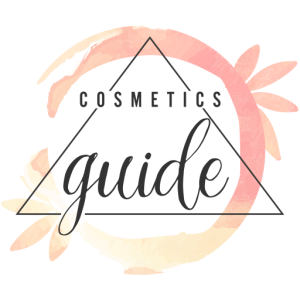Girls,
you know perfectly well that moisturising is the basis for the effective skincare. Water keeps us alive; without it, neither the skin nor the nails… simply nothing is going to be smooth, supple and attractive. This was the inspiration for my today’s post. WHAT MOISTURISING AGENTS ARE INCLUDED IN A CREAM? Generally about hydrating substances in beauty products.
Before moving on to the bottom line, I must clear something up – moisturising ingredients don’t deliver water to the skin or hair, therefore water isn’t a moisturising ingredient! This may sound strange but the definition explains everything.
Moisturising substances – different kinds of ingredients added to beauty products in order to bind water in the skin and lock hydration in.
Let’s focus on the basic moisturising ingredients. We should know which substances deliver hydration so we can match them to our needs. Remember that labels can be misleading so read INCI carefully.
HYDRATING INGREDIENTS can be divided into two basic groups:
I – moisturising and hydrophilic ingredients [lock water in]
II – occlusive and hydrophobic [reduce evaporation]
Ingredients that lock water in:
- Hyaluronic Acid – has very high hygroscopic properties; it creates a protective coat on the skin surface and absorbs water that is needed, among others, in the dermis.
- Collagen – the main building block of skin, it’s responsible for the elasticity. It works like hyaluronic acid, absorbing the essential water.
- Glycerol – many people are worried while seeing it among the ingredients; it’s the most common moisturising component of cosmetics, though. Glycerol penetrates the epidermis, absorbs water and makes exfoliation easier.
- Pyroglutamic acid – in cosmetics, it is an individual water-retaining substance or is mixed with other ingredients e.g. amino acids.
- Sorbitol – it belongs to the group of mild alcohols that don’t cause skin irritation or dryness; instead, it keeps water on the skin surface for a long time.
- Panthenol – my beloved pro-vitamin B5 that has once turned out to be a hydrating type of alcohol. Additionally, it protects, soothes and boosts wound-healing.
- Lactic Acid – well-known for its moisturising power; helps reduce the loss of water in the epidermis and enhances the exfoliation of dead cells.
- Glycolic Acid – one of the acids with the smallest molecules that let the acid penetrate the deepest skin layers, binding water.
- Urea – natural for the body; its hydrating benefits depend on the concentration (<10% is the best one); replenishes water into cells.
Ingredients that reduce the loss of water:
- Paraffin – a very common ingredient of skin and hair care products because it leaves an occlusive layer on their surface and prevents loss of water.
- Vaseline – has similar benefits to paraffin; it’s most popular in skin products which makes the difference.
- Beeswax – an excellent hydrating ingredient that works in an indirect way, helping keep the natural moisture and containing compounds that are natural for the skin.
- Vegetable oils – I could write about oils for a few hours but there’s one key thing – no matter the type, they reinforce the hydro-lipid skin coat and lock water in.
- Silicones – we’re often afraid of them; however, silicones (so-called volatile silicones that evaporate after some time) boost hydration, too.
- Squalane – it occurs as a natural ingredient of sebum and has antibacterial properties; most of all, it has the ability to protect from the water loss.
- Chitosan – it sounded mysterious to me, too. Chitosan comprises lactates, acetates, etc. that create an elastic film not letting the water through.
Although it sounds complicated, I recommend looking for products that contain at least one or two of the discussed moisturising ingredients. They can gift our hair with the must-have, super-hydration. It’s similar in case of the skin. Obviously, using too much doesn’t pay off. Moderation is the only key to success.
Let me know if the post has cleared the issue up 🙂


Leave a Reply